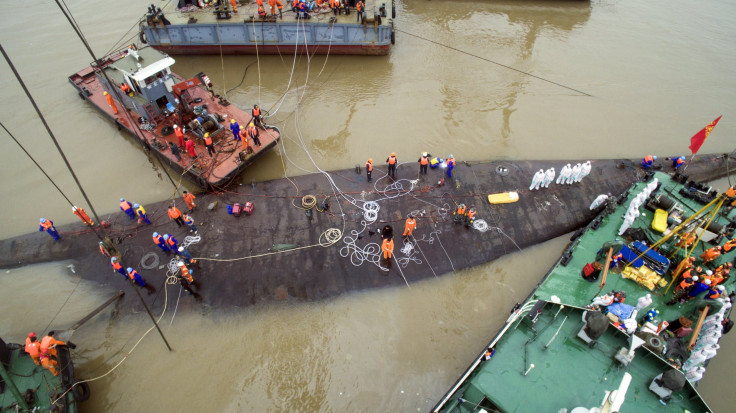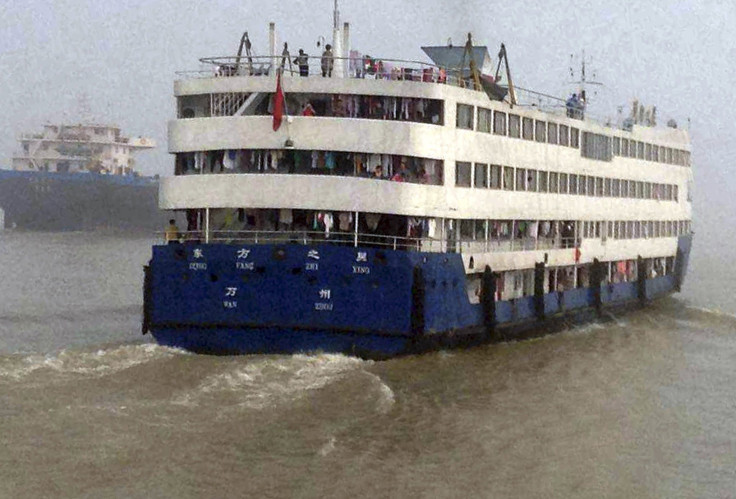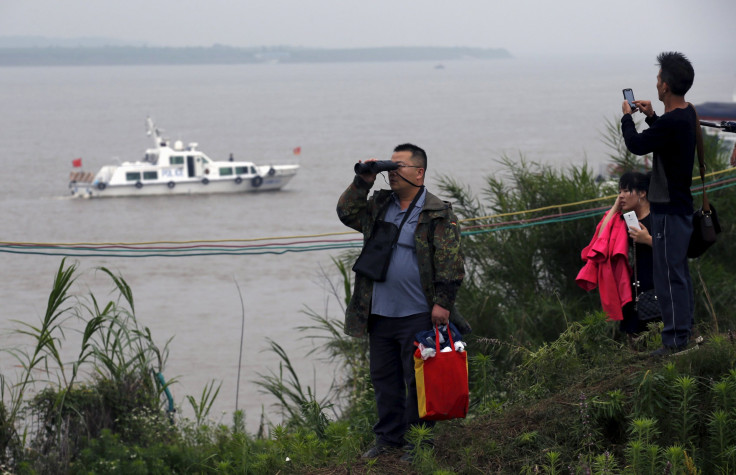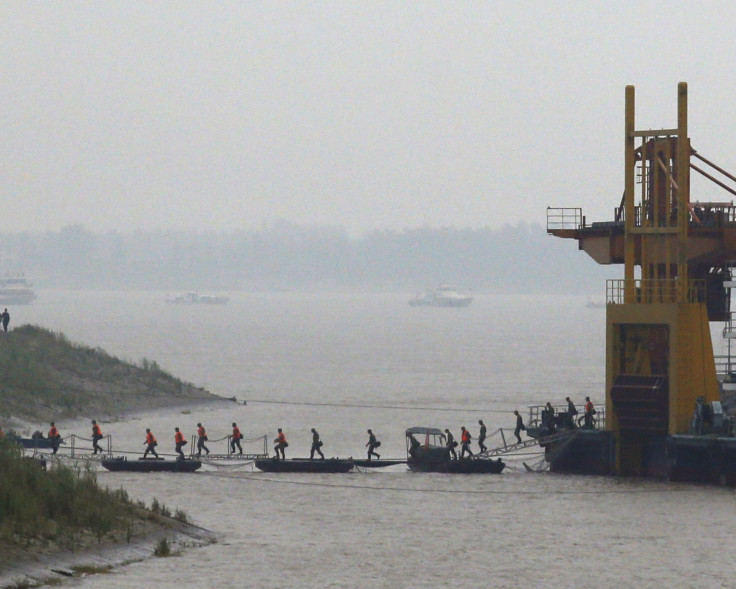Yangtze Cruise Ship Death Toll Mounts, So Do Questions About Safety Standards

SHANGHAI -- On the third day after the cruise ship Eastern Star sank on the Yangtze River in central China, divers continued to recover bodies from the vessel. State media showed rescue workers transporting a series of corpses wrapped in orange body bags on stretchers. The number of confirmed dead has risen to at least 75, with only 14 survivors found so far, out of the 456 people, many of them elderly tourists, who were on board the boat when it capsized on Monday night.
Yet as the death toll has risen, questions about the safety standards of the boat -- and of China’s river tourism in general -- have also mounted. The Eastern Star is reported to have sunk after being hit by a tornado -- and Chinese meteorological officials on Wednesday confirmed that a Force 12 cyclone did indeed hit the area Monday evening. They suggested that this was a freak occurrence, which happened no more than once in five years in this region, and they added that no-one in the world could predict the occurrence of such phenomena more than a few minutes ahead.
However, some Chinese media and experts have asked how a four-story, 76.5-meter-long cruise ship could have overturned within little more than a minute, leaving the crew no time to raise the alarm, and most passengers no time to jump into the river.

On Thursday Chinese state TV reported that the authorities had suspended sailing by another similar boat owned by the same company, state-run Chongqing Eastern Shipping Corporation, and had called for an investigation of its other vessels. The news followed reports that the Eastern Star had been blacklisted two years ago by maritime officials in Nanjing (from where it set sail last week), due to safety concerns.
No further details were given, though state media did say the boat had recently passed another safety investigation.
Several Chinese media outlets have also reported that the ship, which was built in 1994 and was due to go out of service in three years’ time had been extensively rebuilt in recent years. Shanghai news website The Paper published pictures showing that the ship’s prow had been raised and extended; and it said that two access corridors had been removed during the renovation. It also quoted experts as saying that renovations of the ship’s upper floors, where its passenger cabins were located, could have altered its center of gravity -- though this has yet to be proven.
Attention has also focused on the ship’s captain, who was reported to have been detained soon after the accident. Many observers have questioned why he and the ship’s chief engineer were among the very few survivors, with some reports noting that a crew’s duty is to help others off the boat first. However, on Thursday, state media finally named the captain as 52-year-old Zhang Shunwen -- and reports emphasized that he had a spotless record, had won numerous awards and had once saved a passenger’s life -- apparently implying that the authorities may not be blaming him for the capsize.

Some Chinese media reports suggested that the officers might simply have been swept from the boat by waves. And one article published on Thursday emphasized just how rapidly the boat had sunk -- the Nanjing-based Yangtze Evening Post quoted the story of survivor Wu Jianqiang, a 58-year-old farmer from the northern city of Tianjin, who had used his life-savings to take his wife on their first-ever holiday. Wu said that as soon as the ship began listing he had opened the window and told his wife to jump -- but she was trapped behind a bed, and when he let go of her hand to move the bed he was swept out of the window. Within a minute, he said, the boat had turned upside down.
Yet questions have also been raised about whether the captain should have docked the boat earlier: one tour guide on another cruise ship, which left Nanjing at the same time as the Eastern Star, was quoted by The Paper as saying that the vessel seemed to be in a great hurry to reach tourist sites on the river. She said it had set off faster than her own boat, and when the storm picked up on Monday evening, the captain of her boat had decided to find a place to moor and wait for the winds to subside -- but the Eastern Star had carried on sailing. Shipping experts in Shanghai also said that they would not allow vessels to sail in such high winds as those on the Yangtze on Monday evening.
Some reports now suggest that the captain had tried to turn the boat shortly before it capsized, and had told another nearby vessel that he was planning to anchor behind it. The authorities have promised an investigation, which will leave “no stone unturned” into the cause of the disaster.
However some Chinese reports have also said that the incident raises questions about the management of China’s shipping and tourism industries. China’s tour operators are known for cut-throat competition, and sometimes cutting corners on safety standards in attempts to save on costs -- as a series of accidents involving overcrowded buses has demonstrated in recent years. One Yangtze cruise ship carrying more than 400 passengers also caught fire two years ago, though no-one was hurt.

The authorities have launched a campaign to clean up problems in China’s tourism industry in recent months, following a series of complaints. And the Eastern Star does not appear to have been overloaded, and is reported to have had sufficient life-jackets. Nevertheless, the accident will continue to raise awkward questions -- especially if no more survivors are found.
The situation has also raised questions about the ability -- and motivation -- of the Chinese authorities to deal with the families of victims of such disasters. There have been markedly different responses from authorities in different cities: Tianjin arranged for families to visit the site, while officials in Nanjing promised to take them to the Yangtze, but said they would have to wait -- and some families decided to make their own way there. Shanghai initially made few arrangements and said it would not send anyone to the scene, before reversing this decision. Family members who did get to the scene also complained about a lack of access and information, despite a massive police and military presence at the site, and despite officials’ pledges to do all they could for those involved -- though some local hotels did offer them free accommodation, and some drivers provided them with free transport. And, officials and police also sought to prevent some family members from talking to foreign journalists.
© Copyright IBTimes 2024. All rights reserved.





















